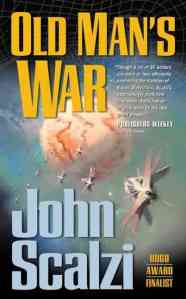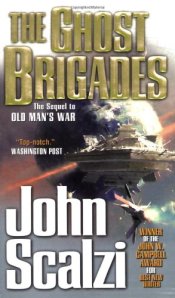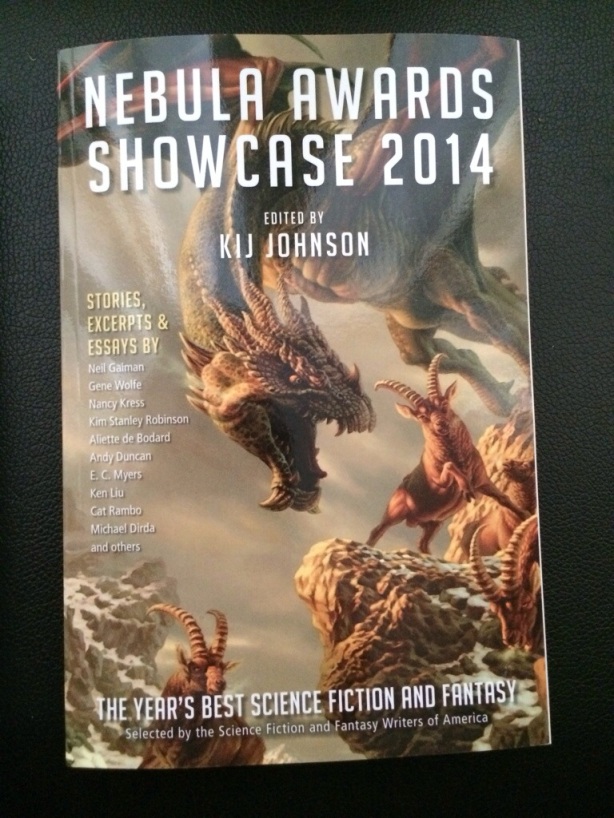I recently re-read John Scalzi’s ‘Old Man’s War‘ and ‘The Ghost Brigades’ because, well, why not? They’re a great, fun, fast read. But, more importantly because I’d been thinking about his novel ‘The Redshirts’, a book that was equally liked and derided on a forum that I frequent (or lurk) when looking for good sci-fi suggestions. It made me wonder about Scalzi’s work and what I found so good about Redshirts. Fortunately enough, when the book came out I was lucky enough to ask the author a few email questions which may help in backing up my thoughts.
As I mentioned both Old Man’s War and TheGhost Brigadeare fast, action packed books. Set in the same universe, the books deal with some cool ideas all set within a rollicking adventure. These books aren’t new so, at the risk of covering old ground, I’ll keep the description short. In Old Man’s War (OMW), we are introduced to the idea of transferring consciousness from a human body ravaged by old age into a new, young, super engineered body. These new super soldiers are the OAPs of Earth who have signed a deal with the Colonial Defence Force as an exchange of military service in space for youth and the possibility of a new, and importantly, young life. The protagonist in OMW is one such pensioner who signed up with the Colonialists and we meet him as he considers the reasons for joining, amongst them the death of his wife. We follow the protagonist, John Perry, as he and other recruits are given their super, new bodies and embark on their military career. There are underlying ideas on identity, and what it is to be human as well as an interesting take on ‘foreign policy’ as the Colonial Force is tasked with combating aliens in an endless war for territory in a teeming universe.
But, there is another theme that, I feel, runs through Scalzi’s books. John Perry sees his dead wife. However, the soldier, Jane Sagan, he sees is not an OAP made new but a differently engineered soldier, made up using DNA from deceased recruits. It is his wife but not his wife. Perry is driven to find out who she is and the novel ends up seeing him go above and beyond to help this women who looks like his beloved.
In The Ghost Brigade, the novel centres around Jane Sagan, and the other special forces soldiers of the books title. These troopers are not transferred humans from Earth but are instead ‘born’ using a computerised consciousness called BrainPal. Tasked with tracking down a renegade scientist, the Ghost Brigade download a copy of his consciousness into a newly born soldier, Jared Dirac, in an attempt to see if they can recreate the scientist and discover his treacherous plans. It doesn’t totally work and Dirac is both a new self but also an incomplete version of the scientist, effectively becoming a new iteration of that mind as the novel progresses. But, the main driving force for Dirac is the memories from the consciousness of his other mind (that of the scientist) of a daughter. The lengths he goes to and the love he feels is extraordinary.
This leads me to Redshirts. Like the books discussed above, there are big concepts at play, such as the idea of being, what it is to be human, to exist. Though again, these ideas are underlying and the novel is fun, humorous and entertaining. As Scalzi admits Redshirts was written based on ” a curiosity of whether I could take what is essentially a five-minute comedy skit of a plot line and make something of it that was more than that five-minute comedy skit. The idea of the “redshirt” is of course not new — in that particular form it goes back 40 years, and literature was familiar with the concept of “cannon fodder” well before then — so the trick here was bringing a new perspective to the idea and sustaining it for the length of a novel. It seemed like an interesting challenge at the time.”
And this is where the book gets exciting. These Redshirts, these extras, realise they are fictional and the novel quickly becomes very meta- fictional. Rather than getting bogged down in philosophical concepts, Scalzi delivers a thoroughly entertaining story all told in his inimitable style. Yet, at the end of the book we are offered three Codas (three conclusions) which, to me, speak directly about this idea I have of Scalzi’s work: the notion of a love that drives, that consumes and completes, be it for a wife or child.
“The novel is about characters who are side characters in an even larger story; the codas have as their main characters side characters in the novel. It gives the book a crunchy, fractal feel. From a storytelling point of view, the codas allowed me to deal with some of the ramifications of the universe I created without warping the story taking place in the novel itself. And from a “I get bored easily” point of view I like the idea of putting in three codas because it’s not what usually gets done, and I like fiddling the formula.” When asked about a specific Coda, this is what Mr Scalzi had to say: “I think there are people who strongly believe only one person is their perfect partner. I believe that there are many people who could be a very good partner for one — and that as a consequence of being with that person one may change to better conform to the life that’s being built between the two. I think that’s how it’s worked with my own marriage: I can imagine that had I not met my wife, I could have married someone else and have been happy and had a good life… but I wouldn’t have this life, and knowing what I know now I wouldn’t to have any other life than this one. So my wife is my true partner, in no small part because we worked at the relationship and made it that way (good news for me: I think she feels the same).”
For me, all three books have this idea of love at their core. All three are great military adventure sci-fi but all can be read with, perhaps, a deeper meaning. As he wrote to me, he hoped the philosophising would happen off the page and that he’d written an entertaining book. Read either way, it’s little wonder John Scalzi wins awards for his fiction.







